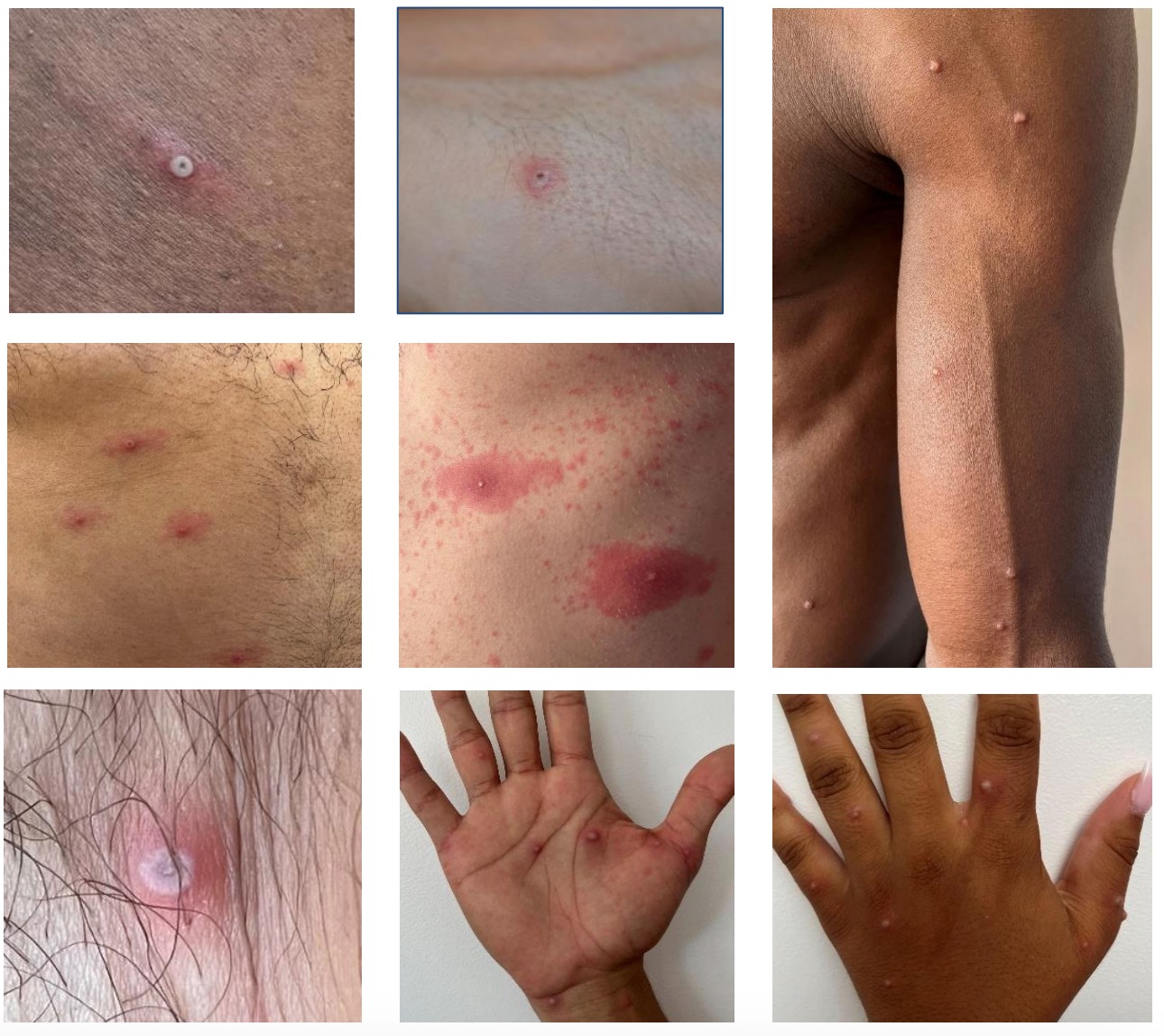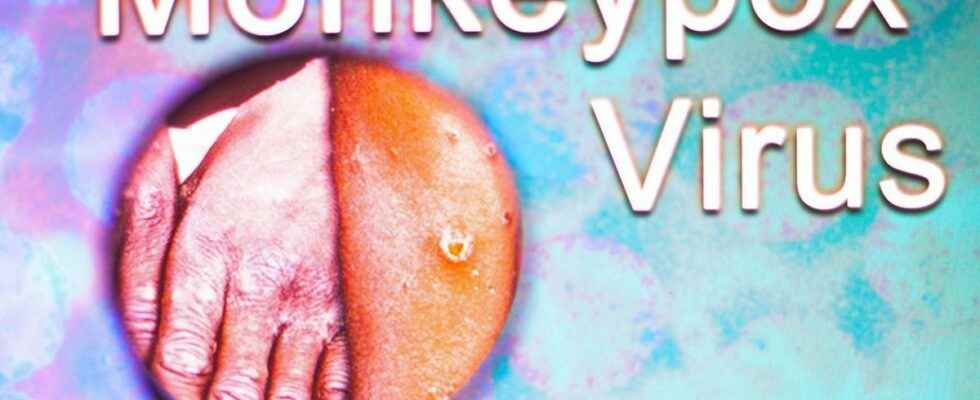Published on
Updated
Reading 5 mins.
The monkey pox epidemic in Europe continues to intrigue. Several studies show that the symptoms of the patients are different from the disease in the endemic countries of Africa. What are the differences ? The order of appearance of these symptoms? And how to recognize them? Doctissimo takes stock.
After a first work published in The Lancet at the beginning of July, which we told you about in this article, which demonstrated that the symptoms of patients affected by monkeypox in Europe are different from those in Africa, a new study published in the BMJ July 28 goes in the same direction.
A study of nearly 200 cases
This work was carried out by British researchers. They studied 197 confirmed cases of monkeypox in London between May and July 2022, to target differences in symptoms between patients in the current outbreak and those in previous outbreaks that occurred in endemic areas.
Of the 197 patients, 196 of them identify as “gay, bisexual or other men who have sex with men” with an average age of 38.
Rectal swelling and penile edema
Among the differences in symptoms, the researchers note swelling of the anal region and edema of the penis of affected patients, which did not exist in monkeypox endemic regions of Africa. The researchers therefore recommend that all physicians suspect monkeypox infection if a patient presents to them with such symptoms.
In addition to these symptoms, the participants all had lesions on their skin or mucous membranes, most often in the genital or perianal area. Finally, in 86% of cases, patients reported a systemic disease affecting the whole body with fever and swollen glands in more than half of cases and muscle pain in more than a third of cases.
Solitary lesion and swollen tonsils
In addition to all these common symptoms, monkeypox may have presented atypical symptoms in some patients. In 22 participants, the researchers noted a solitary lesion and in 9 volunteers, swollen tonsils.
The authors of the study state that “solitary lesions and swollen tonsils were not previously known to be typical features of monkeypox infection and could be confused with other conditions”. They therefore recommend including these symptoms in public health messages to facilitate early diagnosis and control the spread of the disease.
As a reminder, monkeypox causes a flu-like state, with the following symptoms: fever, headache, body aches, fatigue, numerous and swollen glands… After a few days of fever, skin lesions appear. They fill with a clear liquid and eventually dry out and then fall off, possibly leaving scars on the skin.
In what order do the lesions appear?
Monkeypox begins with flu-like symptoms, within 3 to 14 days of exposure to the virus, which usually occurs during sexual intercourse (genital, anal or oral) or close contact, with penetration or not. It is at this time, at a fairly early stage of the disease, therefore, that penile and rectal pain may appear, with swelling and oedema.
In a second time only, lymphadenopathy appears: the nodes are then swollen and numerous. This is where the primary skin lesions also appear.
Finally, pimples appear on the body, the genital and anal region, the face, the hands, the feet, the pubis… We are talking about secondary skin lesions, sometimes with complications.
Different skin lesions according to the stages of the disease
The French Society of Dermatology has reviewed the dermatological manifestations of monkeypox with many photos to be able to distinguish these lesions from other skin disorders. The photos and recommendations of the MonkeyPeaux Group / French Society of Dermatology are available online at https://www.sfdermato.org/upload/news/groupemonkeypeauxfinal-1.pdf.

Primary skin lesions
The first skin lesions are pustules or ulcerations that appear at the onset of the disease, within 3 to 14 days after viral infection. Black crusts appear and accompany the inflammatory nodes which are always present. At the same time, in the genital area, the patient may suffer from penile pain and sometimes urethritis, with discharge and burning while urinating.
There is also sometimes the presence of proctitis, an inflammation of the anal area, with discharge, pain and a feeling of “false need”. The lesions during this period can also be located in the oropharyngeal region, creating lesions of the oral mucosa, but also on the skin of the arms, face, pubis, torso, etc.).
Secondary skin lesions
Secondary skin lesions appear two to four days after the primary lesions. In half of the cases, they are accompanied by a flu-like illness in the patient, but also by generalized fatigue, muscle aches and headaches.
These vesicles and pustules can arrive in several outbreaks and reach the whole body. The patients present between two and about fifty lesions, their number rarely exceeds one hundred. They will end up hollowing out in their center, becoming necrotic and disappearing after 14 to 21 days. Sometimes dermatological complications also occur: impetigo, edema of the uvula, inflammatory adenitis…
Simple recommendations for lesions
The French Society of Dermatology has just issued simple recommendations for the management of lesions caused by Monkeypox. She recommends washing with soap and water followed by rinsing for simple lesions.
An application of an antiseptic (aqueous chlorhexidine) then a copper-zinc cream can be recommended in the event of superinfection, such as Cicalfate, Cicaplast, Cicabio, Dermalibour creams, etc.
For itchy or painful lesions, topical application of topical anesthetic creams/gels (lidocaine, lidocaine + prilocaine) may be helpful.
In general, paracetamol is recommended to fight against pain and fever, it is absolutely necessary to avoid non-steroidal anti-inflammatory drugs (NSAIDs).
Reminder of the rules to follow in the event of suspected contamination
In case of suspicion of monkeypox, it is above all essential to consult a doctor to confirm the diagnosis and to isolate oneself while waiting for his consultation and afterwards, if the diagnosis is confirmed, for at least 21 days.
Barrier measures must also be put in place to avoid contaminating those around you (no sharing of bed linen, towels, dishes, wearing a mask in the presence of others, etc.).
Finally, it is recommended to avoid any physical contact, of a sexual nature or not, with other people during this period. In addition, wearing a condom does not constitute sufficient protection to prevent contamination, but it is recommended to wear it during intercourse that will take place within eight weeks of recovery.
